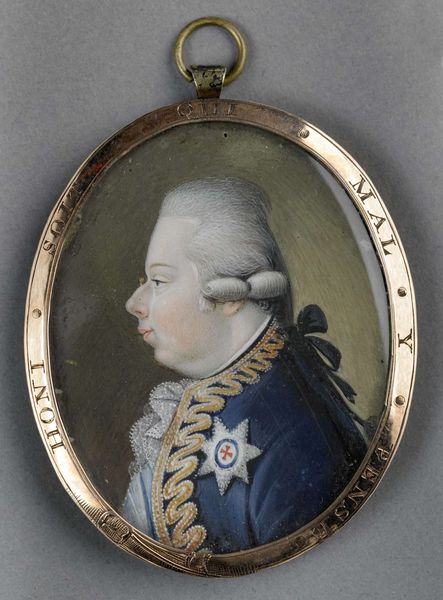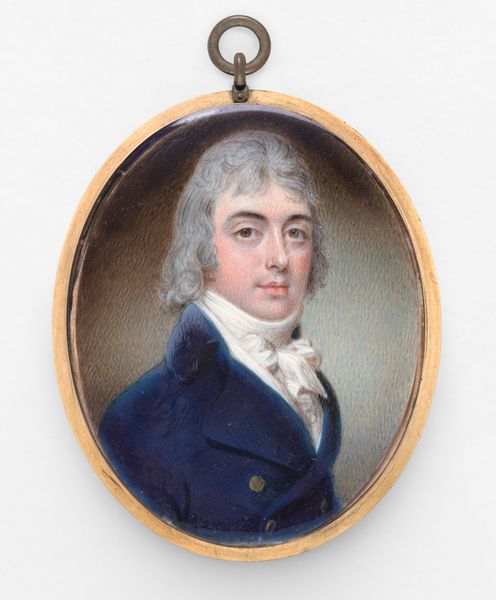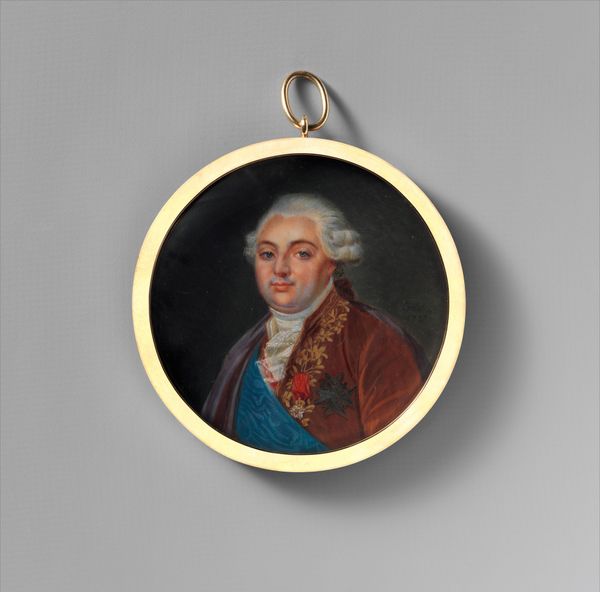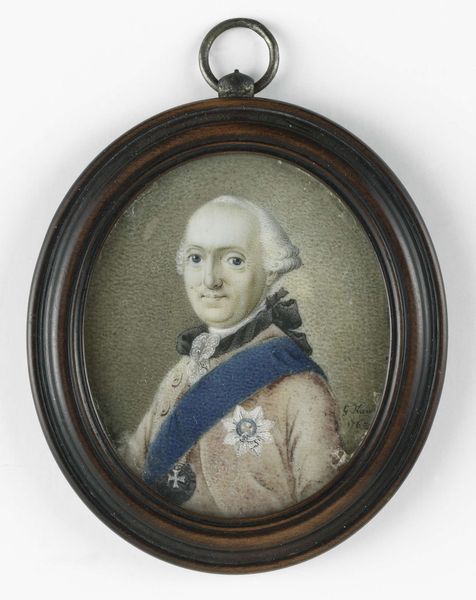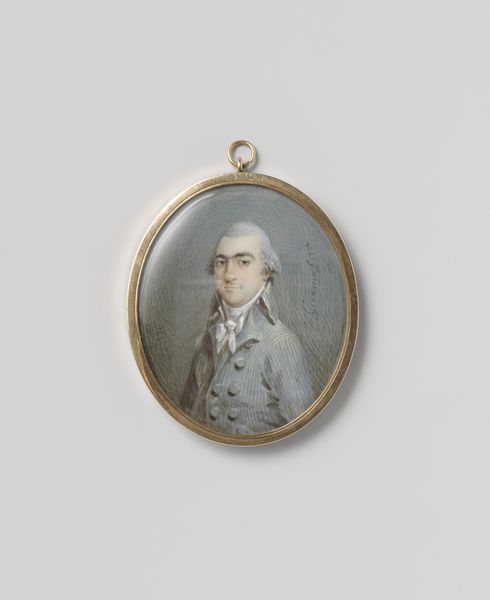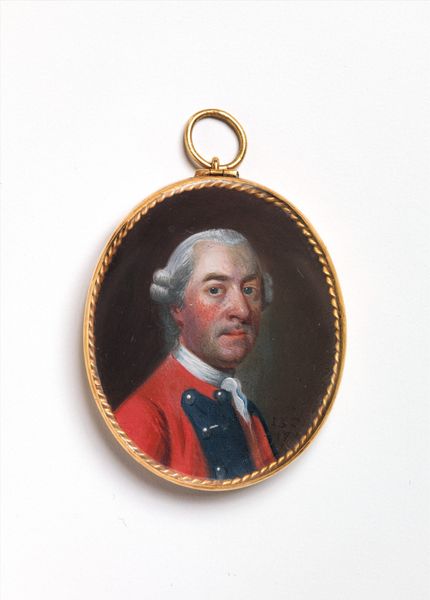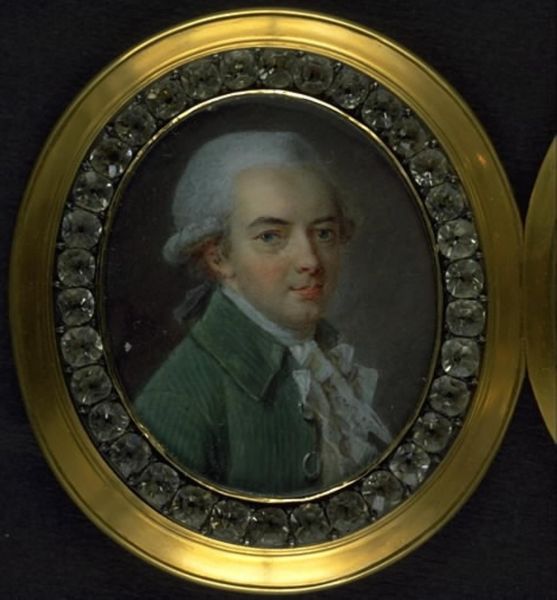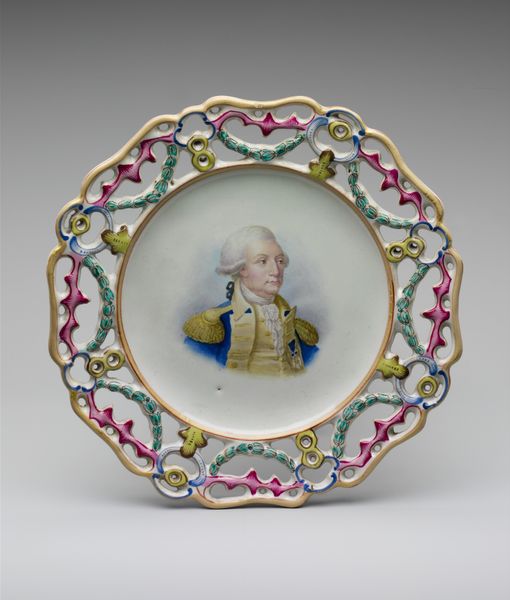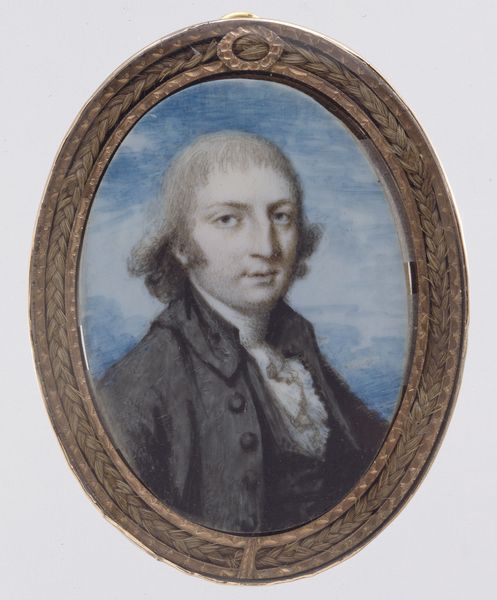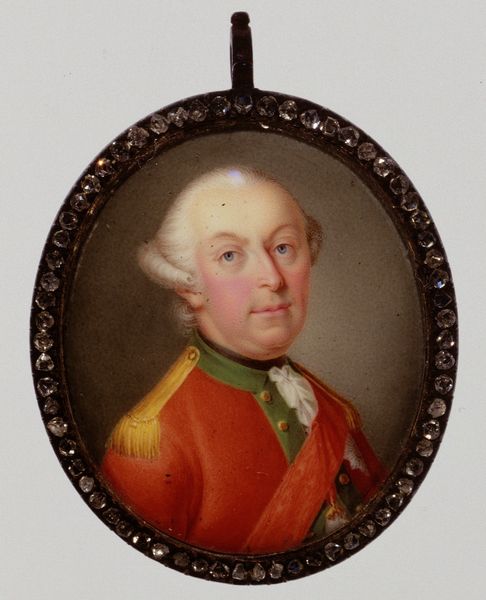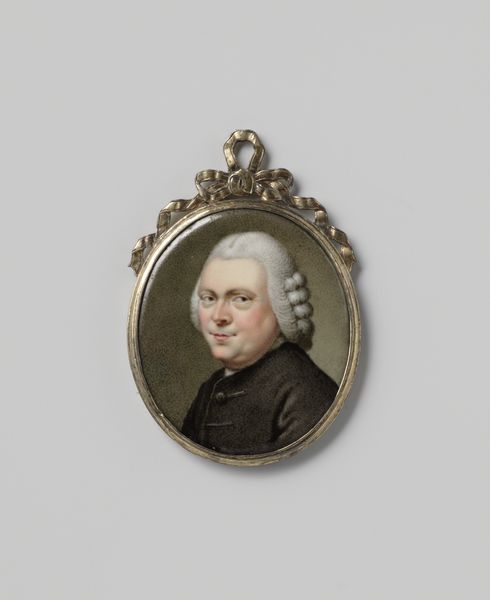
Dimensions: Oval, 2 3/8 x 2 in. (62 x 50 mm)
Copyright: Public Domain
This is a portrait of Abbé Charles Bossut, made by Pierre Pasquier sometime in the 18th century. It's an enamel miniature, framed in gold. Enamel work is fascinating. It involves fusing powdered glass to a metal base at high temperatures. The colors are created by adding metallic oxides. The resulting surface is incredibly durable and vibrant, which explains why enamel was often used for luxury objects and jewelry, as we see here. Pasquier’s skill is evident in the delicate brushwork, capturing subtle details like the texture of Bossut's powdered wig and the sheen of his jacket. The gold frame, with its intricate leafy border and bow, complements the refined aesthetic of the portrait. The frame itself would have involved specialized skills in goldsmithing, including casting, chasing, and gilding. Considered together, this piece represents a confluence of artistry, material knowledge, and skilled labor, all contributing to its value. Miniature portraits like this were highly prized as personal keepsakes among the upper classes. It’s a reminder that even seemingly small objects can encapsulate entire worlds of making and social meaning.
Comments
No comments
Be the first to comment and join the conversation on the ultimate creative platform.
